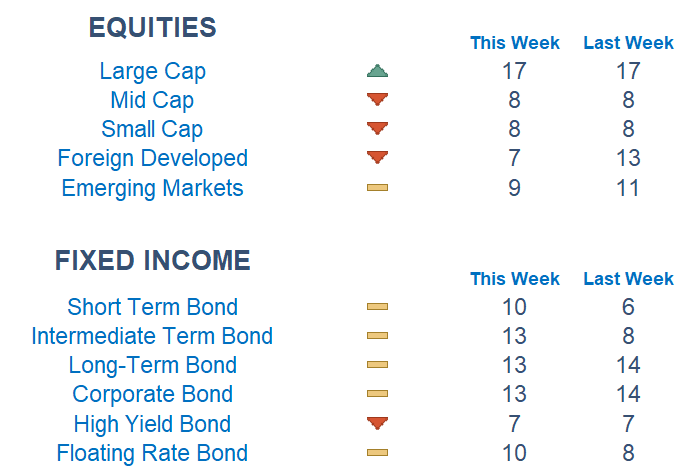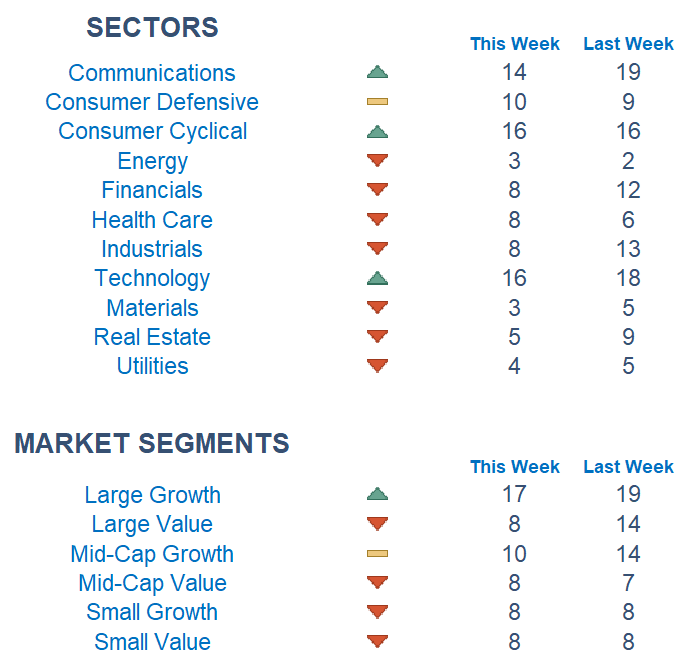Our models held steady on domestic indexes, still favoring growth and larger cap names. Overseas, poor data out of Europe sent Foreign Developed names lower.

This Week on Wall Street - Week of July 3rd
Market Commentary
Our models held steady on domestic indexes, still favoring growth and larger cap names. Overseas, poor data out of Europe sent Foreign Developed names lower. There were signs of rotation out of mega-cap/AI-themed/tech names at the beginning of June, yet it only lasted a week. We will be watching closely to see if the market's slip from last week continues, or if it was a pause before going higher.
Anxiety has grown over how far central banks will go on their hiking cycles to tamp down inflation. The longer and higher they go, the chance of pushing the economy into recession increases. Jerome Powell added to the angst last week by saying the US may need 1 or 2 more increases by year-end. The Fed gets another inflation reading from their preferred index on Friday.
As of last night, developments out of Russia caused modest moves in risk assets globally after a deal was brokered to halt Wagner's troop's advance. Click here for the latest.
Among sectors, we are seeing Discretionary, Communications, and Technology are on top for a second straight week. More economically sensitive sectors like Energy and Materials are underperforming according to our model. Picking names with relative strength within most sectors has remained the dominant and most effective strategy.

What is Newton?
Our Newton model attempts to determine the highest probability of future price direction by using advanced algorithmic and high-order mathematical techniques on the current market environment to identify trends in underlying security prices. The Newton model scores securities over multiple time periods on a scale of 0-20 with 0 being the worst and 20 being the best possible score. Trend & level both matter.

Economic Releases This Week
Monday: None
Tuesday: Durable Goods, S&P Case-Shiller Home Price Index, New Home Sales, Consumer Confidence
Wednesday: Fed Chair Powell Speaks
Thursday: Initial & Continuing Jobless Claims, Existing Home Sales, Fed Chair Powell Speaks
Friday: PCE Index, Consumer Sentiment

Technical trading models are mathematically driven based upon historical data and trends of domestic and foreign market trading activity, including various industry and sector trading statistics within such markets. Technical trading models, through mathematical algorithms, attempt to identify when markets are likely to increase or decrease and identify appropriate entry and exit points. The primary risk of technical trading models is that historical trends and past performance cannot predict future trends and there is no assurance that the mathematical algorithms employed are designed properly, updated with new data, and can accurately predict future market, industry and sector performance.
